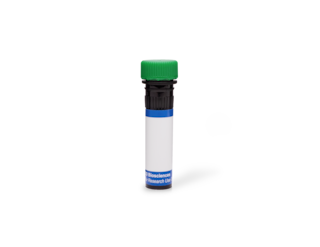-
抗体試薬
- フローサイトメトリー用試薬
-
ウェスタンブロッティング抗体試薬
- イムノアッセイ試薬
-
シングルセル試薬
- BD® OMICS-Guard Sample Preservation Buffer
- BD® OMICS-One Protein Panels
- BD® AbSeq Assay
- BD® Single-Cell Multiplexing Kit
- BD Rhapsody™ ATAC-Seq Assays
- BD Rhapsody™ Whole Transcriptome Analysis (WTA) Amplification Kit
- BD Rhapsody™ TCR/BCR Next Multiomic Assays
- BD Rhapsody™ Targeted mRNA Kits
- BD Rhapsody™ Accessory Kits
- BD® OMICS-One Immune Profiler Protein Panel
-
細胞機能評価のための試薬
-
顕微鏡・イメージング用試薬
-
細胞調製・分離試薬
Old Browser
Looks like you're visiting us from {countryName}.
Would you like to stay on the current location site or be switched to your location?
BD Transduction Laboratories™ Purified Mouse Anti-SNX1
クローン 51/SNX1 (RUO)





Western blot analysis of SNX1 on HeLa lysate. Lane 1: 1:1000, lane 2: 1:2000, lane 3: 1:4000 dilution of SNX1.

Immunofluorescence staining of HeLa cells.




Regulatory Statusの凡例
Any use of products other than the permitted use without the express written authorization of Becton, Dickinson and Company is strictly prohibited.
Preparation and Storage
Product Notices
- Since applications vary, each investigator should titrate the reagent to obtain optimal results.
- Please refer to www.bdbiosciences.com/us/s/resources for technical protocols.
- Caution: Sodium azide yields highly toxic hydrazoic acid under acidic conditions. Dilute azide compounds in running water before discarding to avoid accumulation of potentially explosive deposits in plumbing.
- Source of all serum proteins is from USDA inspected abattoirs located in the United States.
関連製品


Biological processes such as transmembrane signaling and receptor mediated endocytosis revolve around the function of cell surface receptors. A network of molecular machinery directs the intracellular trafficking of receptors during their biosynthesis and mediates signaling downstream of receptors. The sorting nexins (SNX1, SNX1A, SNX2, SNX3, and SNX4) are a family of intracellular proteins that are thought to direct the sorting of receptor proteins. The SNX proteins contain a conserved 100 amino acid region termed the phox homology (PX) domain and are part of a family of hydrophilic proteins which includes S. cerevisiae proteins that function in protein sorting. SNX1, SNX2, and SNX4 associate predominantly with membranes and bind transmembrane receptors such as those for EGF, PDGF, and insulin. SNX1 directs the EGF receptor to the lysosomes for degradation. SNX2 forms homomeric complexes and heteromeric complexes with SNX1, SNX1A, and SNX4. These complexes are thought to be necessary for efficient protein sorting. Thus, SNX1 and other sorting nexins are thought to play important roles in the specificity of protein trafficking to and from the plasma membrane.
Development References (4)
-
Cozier GE, Carlton J, McGregor AH. The phox homology (PX) domain-dependent, 3-phosphoinositide-mediated association of sorting nexin-1 with an early sorting endosomal compartment is required for its ability to regulate epidermal growth factor receptor degradation. J Biol Chem. 2002; 277(50):48730-48736. (Clone-specific: Immunofluorescence, Western blot). View Reference
-
Haft CR, de la Luz Sierra M, Barr VA, Haft DH, Taylor SI. Identification of a family of sorting nexin molecules and characterization of their association with receptors. Mol Cell Biol. 1998; 18(12):7278-7287. (Biology). View Reference
-
Kurten RC, Cadena DL, Gill GN. Enhanced degradation of EGF receptors by a sorting nexin, SNX1. Science. 1996; 272(5264):1008-1010. (Biology). View Reference
-
Strehlow D, Jelaska A, Strehlow K, Korn JH. A potential role for protease nexin 1 overexpression in the pathogenesis of scleroderma. J Clin Invest. 1999; 103(8):1179-1190. (Biology). View Reference
Please refer to Support Documents for Quality Certificates
Global - Refer to manufacturer's instructions for use and related User Manuals and Technical data sheets before using this products as described
Comparisons, where applicable, are made against older BD Technology, manual methods or are general performance claims. Comparisons are not made against non-BD technologies, unless otherwise noted.
For Research Use Only. Not for use in diagnostic or therapeutic procedures.